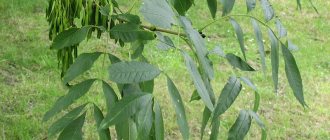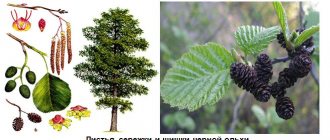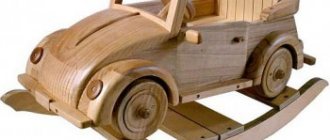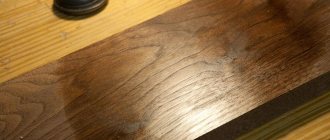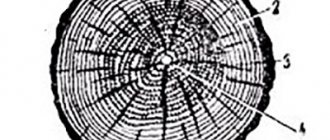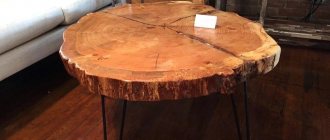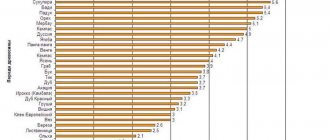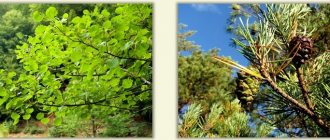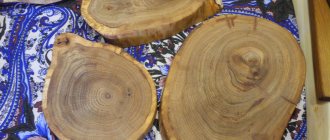Types of wood lumber
People starting construction work purchase lumber ready-made. Different types of rocks are used to produce planed products. There are 4 types of lumber, each of which has its own quality and purpose. Based on the type of wood, its shape and type, a classification has been developed. Wood classification is a set of characteristics, after understanding which, the buyer will be able to choose the right timber for himself.
Buy oak boards correctly: advice from professionals
workerst Construction materials Comments on the post Buy an oak board correctly: advice from professionals 3,708 Views
Among the many types of wood, builders and furniture manufacturers choose oak, which is characterized by its high strength and durability. Particularly popular is oak board, which, due to its high performance characteristics, has found wide application. Considering the climate characteristics in some regions of Russia, it is indispensable when carrying out repair, construction and installation work in St. Petersburg , Siberia, the Far East and other “problem” regions. Meanwhile, there are certain features of choice, and buying an oak board is not as easy as it seems. Our recommendations can help with this.
General information about lumber
The term "lumber" implies a range of wood products of certain sizes and qualities.
Wooden products are made by dividing logs into pieces and then cutting them. The result is blanks, wooden parts and the lumber itself.
The category of lumber by assortment is divided into:
- Bars are products with a thickness of no more than 100 mm. The width is usually less than 200 mm. The bars are often used to make door frames. They are also used to level surfaces.
- Bars - have a width of more than 100 mm and are divided into two-, three- and four-edge.
- Croakers are remnants of the woodworking process. The product is a one-sided convex board. Croakers are used as a basis for the construction of fences, fences, subfloors, benches and design ideas.
- Obapoles are products obtained from the side part of a log after sawing it. This lumber is made from coniferous trees.
- Sleepers are large cross-section beams that are laid across the railroad bed.
The most popular type of wooden products are boards of various thicknesses and lengths.
Types of lumber by processing method:
- Faced - processed wood that has been given a specified length.
- Uncut - unprocessed from the end of the product.
- Calibrated - material dried to a certain moisture content and subsequently processed in accordance with the specified dimensions.
- Planed - obtained by planing one plane or two edges.
- Structural - materials made from hard wood (oak, larch).
According to the type of sawing, timber can be tangential and radial sawing. The first type of cut is made along tangents to the lines of the annual rings of the trunk at a short distance from the core. The second type is sawing, in which the cut is made through the core of the log.
Larch
Dry larch boards are significantly superior in quality to lumber from other coniferous species. Note that it is also heavier than the more widely used pine or spruce (density 550-590 kg/m3). The material is durable and tough. Another advantage is low shrinkage and low susceptibility to warping.
Its Brinell hardness is 3.1, which is almost twice that of pine and is close to oak, so larch boards are excellent for flooring. Just like oak, the material does not lose its properties in contact with water and high humidity. Larch is excellent for constructing hydraulic structures.
Today you can find many buildings that have been based on pile structures made of this wood for more than 600 years and still do not need repair. The board does not need to be painted or treated with protective compounds, especially since the wood has a pleasant texture and a light yellow color with a hint of red. There is lumber from the so-called “bloody” larch with a predominance of red. A feature of the tree structure is the presence of multiple ingrown resin knots, but this does not affect the strength. By the way, these knots make it easy to distinguish larch from other conifers.
When choosing a board, you should pay attention to another feature of sawing wood of this species. The tree has a thick layer of sapwood, which is lighter in color and has poorer characteristics. Only the darker core is used to make boards. Sapwood wood can be used for decorative purposes.
General technical requirements
To determine the grade of edged and unedged lumber, there are generally accepted state standards.
Regulatory Requirements
Wood producers rely on the regulatory framework, which is regulated by such documents as GOST 24454-80, GOST 8486-86, GOST 2140-81, etc. All documentation is freely available, but some meanings are still incomprehensible to people far from the construction industry.
Since mostly softwood lumber ends up on construction sites, GOST 8486-86 is considered the most basic document.
Key excerpts worth paying attention to:
- Boards and bars are divided into 5 grades, bars - into 4.
- Wood moisture content should be no more than 22%. Drying wet wood is almost impossible.
- The roughness value parameter is set to 1250 microns, and for grade 4 - 1600 microns.
- The nominal length of the product should be 1.0-6.5 m, and deviations from it should be from -25 mm to + 50 mm.
GOST 8486-86 Softwood lumber. Specifications
The grade of products is strongly influenced by the criterion for limiting natural wood defects. The general list of required parameters according to GOST is more than 30 items.
Norms and restrictions of natural vices
Each type of wood has its own standards and restrictions on natural defects. These characteristics are given in GOST in the form of a table.
GOST 24454-80 Softwood lumber. Dimensions
Excerpts from the regulations:
- Tree knots are divided into healthy, rotten, edge, and partially fused. Each type of wood has a strictly regulated number of knots.
- The slope of the fibers for the highest grade should not exceed 5%, otherwise the wood will be assigned grade 1.
- For selected wood, the presence of rot, mold, wormholes, fungal and cancer spots and foreign inclusions is unacceptable.
GOST 2140-81 Visible defects in wood. Classification, terms and definitions, methods of measurement
There is also such a parameter as longitudinal warpage, which should be up to 0.20% of the width of the lumber.
Classification of lumber
Lumber manufacturers offer customers two types of boards: edged and unedged.
Edged board is a rectangular material made by special processing (planing). Careful sanding allows you to install edged boards directly to the desired area.
An unedged board is a material that has uncut edges on the sides. This type of product is several times cheaper than edged.
The grade of wood is determined according to various criteria, which include: size, humidity, presence of irregularities, etc.
The wood classification has 5 grades, ranging from selected boards to wood scraps.
- Selected variety is the highest quality and most prestigious of all. The material does not have knots, stepsons, cracks from shrinkage and bark residues. It also lacks putrefactive lesions and other similar defects. The boards are used in automotive production and shipbuilding. They are used to make masts for yachts, deck coverings and high-quality luxury furniture.
- 1st grade is a popular and sought-after product. This includes lumber with a minimum number of knots and cracks. The boards are free of putrefactive damage, through holes, traces of parasites, as well as mold and other foreign elements. First grade wood is used for the manufacture of critical structures, door and window blocks.
- 2nd grade - this category includes lumber with small “defects” that do not spoil the appearance of the product. The presence of deep cracks, rotten knots, and rottenness is not allowed. Acceptable defects include the presence of loose knots with a diameter of up to 20 mm. Such boards are used to lay sheathing or build wooden panels.
- 3rd grade - a group of lumber with low quality. The products are intended for the production of transport packaging boxes, decking or pallets. The main requirement is the absence of large fused knots and deep cracks. Traces of wormholes, through cracks, tobacco knots and mold are quite acceptable. In addition, this type has a fairly low load-bearing capacity.
- Grade 4 is the cheapest class of lumber, which involves a large number of flaws. Products are often used for the construction of temporary fences and enclosures, sheds, and outbuildings. Acceptable defects: roughness, wingedness, general rot damage, fused knots, presence of wane.
Fruit trees
For orchard owners, the ability to determine the age of a tree is of great importance. How to do this without harming the plants? There are several methods.
One of them is calculating annual growth.
This method allows you to find out the age of a tree without causing harm to it, with an error of 1-2 years. It is most often used in gardening. This approach is relevant for fruit trees and some wild forest trees. How to determine their age quickly?
It is enough to find the oldest skeletal (large, one of the main in the crown) branch. At the base of each one-year-old shoot, an influx resembling a ring is formed. By counting such increments, it is quite easy to determine how old a given plant is.
Accounting is carried out in the direction from the top of the branch to the trunk. 2 is added to the resulting figure, the final value will be the desired age of the tree. Annual influxes are quite difficult to determine in plants whose age exceeds three years. In this case, it is better to count the branches. However, under different conditions, shoots can die or form more than one per year. This method will have a slightly larger error than the previous one.
How to choose the right variety
Once the wood arrives at the warehouse, it is no longer checked for defects. When purchasing timber, a person must rely on regulatory control and his own knowledge. To make the right choice, you need to study the varietal characteristics and rely only on them.
Often, instead of digital values, wood grades are marked with the letters A, B, C. These designations correspond to the number of defects in the product.
Sometimes you may encounter the fact that a selective class is marked with the number 0, or with an ordinary horizontal line. The first class (1) is indicated by a dot, the second by two dots or two slashes. Third grade (3), by analogy, 3 dots or 3 vertical stripes. Each manufacturer labels their products differently.
Tips for choosing lumber:
- If the products are required for outdoor use, then you should pay attention to the absence of deep cracks on them. As for knots, they significantly reduce the mechanical characteristics of wood.
- Closely spaced growth rings are a sign of the strength of the material. If the rings run parallel to each other, then you can safely make furniture from such wood. Hardwoods are suitable for constructing stairs and flooring.
- You should not use selected grade timber where second- or third-grade raw materials will do.
You can determine the quality and type of wood visually, but it is better to purchase timber from a trusted supplier.
Advantages and disadvantages of oak boards
When choosing between wood materials, our ancestors didn’t think much about solid oak boards. The fact that they made the right choice is evidenced by numerous residential buildings and non-residential buildings made of oak that have survived centuries. The modern building materials market offers a large number of coatings made on the basis of edged oak boards, and it is attractive for the following parameters:
- It is difficult to find a more natural material than wood, and oak is no exception. Like larch, it has a beneficial effect on the human body, so it cannot be replaced in the construction of baths.
It is important! To understand the origins of real “Siberian health”, it is enough to visit a Russian bathhouse made of oak at least once in your life and take a steam bath with oak brooms, which you must know how to prepare, just like installing oak parquet boards.
- High density and elasticity of the material, which underlies its performance properties. Oak-based building materials can be used indoors, outdoors, in the ground, and even under water.
- Good moisture resistance and resistance to rotting, which is based on the large amount of tannins that make up the wood.
- Strength and durability, and oak boards last for centuries.
- A variety of shades and a unique texture, which is especially appreciated by designers. Due to its high strength, solid oak can be used to make products of the most bizarre shapes, and this property is widely used in furniture production.
Speaking about the disadvantages of oak boards, it is worth highlighting some difficulties that arise during the processing process, which is associated with high hardness. There is also a risk of cracking, but to prevent this from happening, you should look at the quality of the wood while still in the store or market. It’s better not to save money and buy dry oak boards that have undergone appropriate processing. It is guaranteed to last a long time.
It is important! Experts have great doubts about the quality of oak products that grew in places with high humidity - near water bodies. You won’t be able to tell by appearance, so you need to buy materials from trusted suppliers.
Determining the type of wood by texture
We have a similar topic in medicine. Histology. They give you a piece of glass with a thin cut of tissue. And determine the organ, the diagnosis.
We make marks on the pieces of glass with a pencil. And scratches. So as not to fail in the exam. Sharpers have marked cards, we have marked glass
Such teachers should be given bonuses.
We had a geography teacher like this at school. Although everyone hated him, they respected him. And they taught geography. By the way, the guy is a former military pilot and has been to hot spots.
I also had to prepare my own collection of anomalies for the exam. The bf sat down with the teacher and discussed it like Pokemon experts
vital examination glasses were not given to students at all
- Doctor, why did you transplant me a kidney instead of a liver?
Only pathologists and forensic experts should know histology so thoroughly. For the therapist, this is art for fun
In general, honey has strange entertainment. An exam in gynecology from a medical professional, dentistry from a military medical specialist with a differential pass, and the cherry of OZZ. Everyone, and so that no one leaves offended
Is he still talking about the piss in the jar or not anymore?
If it has a blue speck, then these are leukocytes - an inflammatory process. And if there are three scratches on the side of the glass, it’s an ulcer.
Is it normal that doctors can then identify an ulcer only from a piece of glass?
That's what it's called a biopsy. Quite a working diagnostic method
It seems to me that a biopsy involves studying tissue, not scratches on a piece of glass. Moreover, in real life there will be no scratches there.
So in real life, doctors don’t study tissue under a microscope. Laboratory specialists study it, and then the results of the research are given to doctors.
And who said that laboratory specialists did not have such pieces of glass with serifs?
This is how laboratory specialists study their subject much more deeply. They have categories and specialization. Do you think that a doctor will learn microscopic vision in a university histology course? Or will a dentist be taught how to operate in six months? There are general subjects and specialties
At first I didn’t understand anything, and then again I didn’t understand anything. Where did the scratches come from on the glass?
Students scatter pieces of glass so as not to fail in the exam. The set is often the same
We only had a human. Rats were cut in the first year in biology
There is nothing worse than pharma. It’s better to take the gist three times with pathan
Rainbow like that. Multi-layered)) Shaggy. Epithelium is actually funny
There is also an option. If dad is a big boss in the Ministry of Health, there is no need to study. And these comrades are now also in the Ministry of Health
Of course, neural networks are already able to make diagnoses more accurately than doctors based on verbal descriptions, and soon they will be able to use tests as well.
Who will order the tests? :)
Neural network based on survey data.
And who will pay? What if there are redundant tests? Who will be fined? How does a neural network cope with “well, I don’t know, dark energy is rising or something” and similar complaints?
What about objective data? It just so happens that I work in the field of medical AI and neural networks are still very far from doctors.
Neural networks, as in general, are very far from any person. The problem is sufficiently powerful hardware - now it’s simply not possible to create the powerful computer you need.
Well, that's what I'm leading to.
Whether the patient or insurance will pay for it seems logical. Who decides what is redundant and what is not if there is only one attending physician? Should I assign a consultation to each patient? The one who took responsibility will be fined as usual. Eliminates, just like a person. What about the sky and the stars? I don’t understand why the requirements for a neural network are higher than for a person.
> Who decides what is redundant and what is not, if there is only one attending physician? Should I assign a consultation to each patient?
Apparently you haven’t encountered diseases a little more complicated than a cold? Almost all diseases are studied and treated collectively.
>Weeds out, just like a person.
Man does not sift, but interprets.
Modern neural networks have a big problem with processing incoming information. It is varied, unsorted. There are no uniform input standards. There is no uniformity of complaints and no coherent logic in decision-making. Much still depends on intuition. Many diseases do not have pathognomonic symptoms and there is no uniform clinical picture.
Our AI, for example, has processed about 200 completed medical cases and there is progress in fairly simple diseases such as ARVI. In slightly more complex ones there is still too much garbage.
Therefore, dreams of an AI doctor are still too rosy. In 10-20 years maybe. For now, he can only do it as a doctor’s assistant. But these, again, are only a few large clinics in central cities. What can we say about the rest of Russia?
This does not make it any easier for patients.
Intuition is probabilistic interpretation, which is what neural networks do best. And yet, you work with AI, what is this nonsense about several clinics? One of the advantages of employing people is scalability.
Eh no. Intuition also works with a minimum of input data, unlike neural networks.
If a patient has a stomach ache, it may be conditional appendicitis or conditional colic. The neural network will conditionally give out 30% for one thing, 30% for another, and the rest will be filled with all sorts of garbage.
What's next? What's the point of this advice? Diff. diagnosis will still come down to either waiting (+ additional tests) and the answer will be clear even without neural networks, or to surgical intervention.
Classification of wood by heartwood and sapwood
- The color of wood depends on the type of tree, age, speed and location of growth.
- The intensity of the color depends on the concentration of tannins, resins, and dyes in the wood.
The heartwood is the dead wood inside the trunk. As a rule, the core of the trunk is darker than the sapwood. This is due to the fact that as living cells inside the trunk die, tannins and dyes are deposited in them, since the water supply pathways are clogged.
It is tannins and dyes, as well as resins and calcium carbonate that contribute to the coloring of the central part of the trunk in darker colors.
The lighter wood around the core is a layer of living cells called sapwood. The wood core is the hardest part of the trunk. It is denser than sapwood and has greater resistance to rotting.
All wood species are divided into three groups:
Heartwood species have dead cells in the center of the trunk, which are darker in color. Sound tree species include trees such as larch, oak, pine, cedar, apple, juniper, ash
Sapwood does not have dead cells. Sapwood species include maple, linden, pear, birch
Mature wood is considered to be wood where the color of the sapwood does not differ from the color of dead cells, for example, beech wood
Oak board
Dry oak boards have a higher density (550-750 kg/m3) and hardness compared to other species. The surface is abrasion resistant (Brunel hardness 3.7) making it an excellent material for flooring and decking. In public buildings, floors are most often made of oak. Wood is not afraid of moisture and is resistant to microorganisms, mold and fungi, due to the fact that the tannins it contains are a natural antiseptic. Constantly being in water, solid oak does not collapse, but rather increases density and hardness, improves appearance (bog oak). For structures that are exposed to precipitation, this is the best choice. Well suited for exterior decoration of buildings. A fence or building cladding made from oak boards does not need repair for several decades, even if it is not treated with special compounds or painted. Rich people used to try to build a log house using it. The price also includes oak furniture. When choosing, keep in mind that there are three types of oak wood:
- Borovaya oak (other names are oak and stone) - trees were harvested in dry places. It is distinguished by the fine-grained structure of yellow wood. The elasticity of the material is reduced, but the hardness is greater.
- Olsovy (lead, water iron) - harvesting was carried out in damp places, lowlands. The structure is large-layered with a pale pink tint. The elasticity is excellent, but the possibility of cracking is increased.
- The third type is transitional - elasticity and hardness are average between the previous types.
The disadvantages of oak boards include their higher cost than other types of wood. You also need to pay attention to the fact that due to the high density and hardness of the material, large cutting angles must be set during processing. When installing using nails, they must be lubricated.
Classification of wood by hardness
Determining the hardness of wood is necessary to identify the operational and consumer properties of structures and other wood products. Such as resistance to scratches and dents on wooden products, wear resistance of wooden flooring, stairs, etc.
The hardness of wood is the ability to resist the penetration of harder bodies into it.
For wood cutting, the hardness class is especially important. Since the durability of the cutting tool depends on the hardness of the wooden workpiece.
A fast-growing tree has softer wood than one that grows slowly. Sapwood is softer than heartwood and mature wood.
It is customary to divide wood into three classes according to the degree of hardness:
- Soft
- Solid
- Very hard
Softwoods include poplar, chestnut, pine, fir, spruce, cedar, aspen, alder, and linden. The wood species is classified as soft, the density of which is less than 540 kg/m3
Hardwoods include walnut, apple, oak, larch, birch, maple, ash, elm, and sycamore. The wood species is classified as hard wood, the density of which varies in the range of 550-740 kg/m3
Very hard wood species, such as dogwood, rowan, white acacia, hornbeam, boxwood, pistachio tree and others, with a density of more than 750 kg/m3
Larch
The density of Siberian larch is 620-725 kg/m3 with a humidity of up to 12%.
Larch is a genus of woody plants of the pine family, one of the most common species of coniferous trees. This is the only genus of conifers whose needles fall off in the winter.
Larch wood is characterized by increased strength compared to oak. In addition to special strength and resistance to external influences, it is characterized by good color and structure.
Possessing high physical and mechanical properties, at the same time it requires a certain technological approach when processing it. Saw blades become heavily oiled when sawing. It is difficult to process with ordinary tools, but can be sanded and painted well. Prolonged exposure to water leads to a noticeable increase in hardness.
Areas of application of various types of wood in construction
The choice in favor of one type of wood or another should be made depending on the purpose for which the material will be used.
For example, softwood is easy to process, but complex carving elements cannot always be made from it.
Hard varieties must be used to create reliable, high-strength structures.
The most common types of wood and their standard areas of application:
- Spruce, fir - timber, flooring, rafter structures, laminated veneer lumber, middle panel board
- Pine timber, furniture, flooring, windows, paneling, doors.
- Larch timber, furniture, flooring, windows, doors
- Juniper, thuja - construction timber; blinds, façade cladding, shingle covering.
- Oak furniture, plywood, parquet, half-timbered wood (structural wood), windows and doors.
- Beech furniture, stair steps, parquet.
- Ash furniture, floors.
- Alder furniture, plywood.
- Maple furniture, parquet, table boards.
Having information about the characteristics and areas of application of wood species, it is easier to choose the most suitable material for a specific task.
Ash
The density of wood is 690 kg/m3.
Ash is a genus of deciduous plants of the olive family, which has about 70 species. Ash grows singly or in groups in mixed forests, often together with oak, less often with conifers.
This is a modest neighbor of the oak tree, which for some reason has not become so famous, although it deserves all sorts of praise. Not inferior to it in strength and hardness, richness of texture, it is significantly superior to it in long-term resistance to deformation and impact strength. Therefore, it is ideal for the manufacture of stairs, flooring and other interior details. Currently, ash is increasingly becoming fashionable among furniture makers and parquet manufacturers. Regarding consumer qualities, we can say that ash, with standard care, lasts a long time and does not present any surprises. The cost of products made from it is close to the cost of products made from oak and beech.
How to determine the type of wood, studying materials
If you cannot distinguish a pine board from a spruce board and do not see the difference between oak and ash boards, try to take a closer look at some of the characteristics characteristic of each type of wood and determine its identity.
Living trees have many different characteristics that distinguish one botanical species from another. Leaves, bark, crown shape, alternation of buds and other characteristics provide rich material for comparison.
However, to identify wood, you have to deal with other characteristics, which experienced specialists call key. The following simple methods will help you identify the common local breeds you may be dealing with.
First look at the color of the wood
Dirt and dust accumulate on the boards, and light and air cause the fibers on the surface to fade and turn gray. Using a sharp knife, scraper or small plane, clean a palm-sized area of the surface on the tangential cut board. At the same time, you will be able to evaluate the hardness of an unknown rock by comparing it with familiar samples. The nut is very easy to recognize. You can recognize red oak by its reddish-beige color, an additional feature of which is its expressive texture pattern. Expand your knowledge by looking at color and texture samples at lumber stores, and build your own collection in the workshop.
Your nose can help you determine the type of wood
Lightly moisten the cleaned area with water or saliva. This will activate the wood, even if it is old and completely dry. Smell it. If it has a smell, does it resemble the smell of one of the rocks that you have already dealt with in your workshop?
